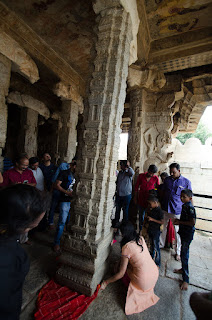Unveiling the Indian Tricolour Flag: A Symbol of Unity and Pride
Indian Tricolour Flag, with its vibrant hues of saffron, white, and green, holds a special place in the hearts of over a billion Indians.
Beyond being a mere piece of cloth, it represents the soul of a nation, encapsulating its struggles, triumphs, and aspirations
The Design of the Indian Tricolour Flag
The Indian Tricolour Flag is a masterpiece of design, with each color and element carefully chosen to convey profound meaning:
Saffron: The Strength and Courage
The top band of the flag, saffron, signifies courage and selflessness. It represents the fearless spirit of India's freedom fighters who braved all odds to secure the nation's independence.
White: The Purity and Truth
The middle band, white, stands for purity and truth. It symbolizes the unwavering commitment of the Indian people to truth and righteousness.
Green: The Growth and Fertility
The bottom band, green, represents growth and fertility. It embodies the hope of a prosperous and harmonious India, where the seeds of progress are sown with care.
Evolution of the Tricolour
The journey of the Indian Tricolour Flag from its inception to the present day is a testament to the nation's evolution:
1906: The Birth of the Flag
The first Indian Tricolour was hoisted during the All India National Congress in 1906. It bore three horizontal stripes of green, yellow, and red.
1921: Mahatma Gandhi's Influence
Under the guidance of Mahatma Gandhi, the flag underwent a transformation. It adopted the now-familiar saffron, white, and green colors.
1947: Independence Day
On August 15, 1947, the Indian Tricolour was officially adopted as the national flag, marking the dawn of a new era of independence.
Significance of the Ashoka Chakra
The Ashoka Chakra, a 24-spoke wheel, adorns the Indian Tricolour in navy blue. It is a symbol of relentless progress and dynamic change. Each spoke represents a virtue, and together, they embody the wheel of law and righteousness.
Emotions and Pride
The Indian Tricolour Flag evokes a myriad of emotions among Indians:
Pride: Every time the flag is hoisted, Indians swell with pride for their diverse and vibrant nation.
Unity: The flag unites Indians across geographical and cultural boundaries, fostering a sense of oneness.
Hope: It instills hope for a better future and a stronger India.
Patriotism: The sight of the flag kindles a deep sense of patriotism, reminding Indians of their duty towards the nation.
FAQs
Q: When was the Indian Tricolour Flag first hoisted?
A: The Indian Tricolour was first hoisted in 1906 during the All India National Congress.
Q: What do the colors of the Indian Tricolour signify? A: Saffron represents courage, white symbolizes purity, and green stands for growth and fertility.
Q: Who designed the Indian Tricolour?
A: Pingali Venkayya, an Indian freedom fighter and poet, is credited with designing the Indian Tricolour.
Q: How is the Ashoka Chakra related to the flag?
A: The Ashoka Chakra, a 24-spoke wheel, is a symbol of progress and righteousness, adorning the Indian Tricolour.
Q: What is the significance of the Indian Tricolour?
A: The flag symbolizes India's struggle for freedom, unity, and the aspirations of its people.
Q: Can the Indian Tricolour be used for commercial purposes?
A: No, the flag should be treated with utmost respect, and its commercial use is prohibited by law.




Comments
Post a Comment